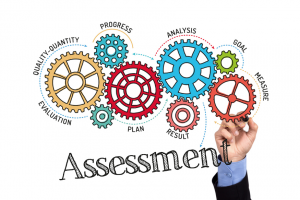
When elephants are in the room, it means an obvious issue or situation is being avoided or ignored. While you may rely on the excuse, “if you ignore them, they’ll go away,” these elephants have a sneaky way of sticking around and sabotaging results — regardless of your feelings about their importance.
Team members quietly quit when unspoken issues or difficult situations are not vocalized and resolved. Usually, their reluctance to speak up is due to fears of personal or professional reprisals if they rock the boat. Or, the fear is due to not having the confidence, communication skills, or self-esteem to stay in the conversation when others don’t agree with them.
As the leader, it’s up to you to make the conversations safe and respectful and be committed to opening up the conversation to expose difficult issues or situations.
Ironically, talking about these elephants clears the air, energizes the team, and produces unprecedented results. However, achieving these results requires straight talk and a willingness to stay focused on removing the elephant when it doesn’t want to readily lumber away!
How to Resolve Five Common Types of Elephants
When resistance is due to:
Overwhelm. Keep the conversation simple when the issue seems impossible or too big to handle. Use open-ended questions: “What is your experience with the new A/P system?” Allow others the opportunity to voice concerns without fear. Once everyone has had a chance to talk, brainstorm possible solutions. Now, create a focused action plan and speak directly with the person(s) that have the power to resolve it. Remember to stay focused on the solution, not personalities.
Egos. These can be the most difficult elephants to mitigate since egos involve executives’ sense of self-esteem and self-importance. Offer ideas in small pieces and let them choose which one to use since s/he ignores brainstorming. Then, give them credit when the idea succeeds, and offer one or two suggestions if it fails. Remember, the goal is to remove the negative impact on you and your team. As you gain the executives’ trust, you can have more effect.
Entrenchment. We’ve all heard the expression, “It’s the way we’ve always done it.” When team members offer ideas to resolve concerns, it’s essential to listen and learn and not take them personally. Set aside your ego as the leader, use critical thinking so that change isn’t for the sake of change, and manage the process to include everyone.
Bad Acts. If there is a claim of harassment or microaggression, or allegation of theft, it’s imperative to act responsibly now. Have a private conversation with your boss and human resources to determine how to proceed. This may mean letting a well-liked team member or coworker go. Remember, this elephant is negatively impacting others. And these observers are watching how you’ll handle the situation and are adjusting their work performance accordingly. Note: If you ignore this one, you’ll lose credibility, your team, clients, and your business.
Failure to Commit and Act. There are times when elephants have been addressed, but there is no change. Or the leader has agreed but fails to remove the elephant due to political reasons or is second-guessing their agreement. (Examples include continuing old hiring practices and resisting a needed strategic hiring system or asking a major financial contributor to stop smoking in a no-smoking office.) Get this resolved asap. Ask for help by talking with your executive coach for objective counsel. Stop hoping the elephant will eventually go away. Hope is not a strategy; elephants tend to stay too long when you avoid following through for win-win-win outcomes.
©Jeannette Seibly, 2011-2022
 Jeannette Seibly is The Leadership Results Coach. She has been an award-winning international executive and family business management consultant, keynote speaker, and author for over 29 years. Her focus is to guide leaders to make a positive difference. Feel stuck moving your team forward? Want straightforward counsel on how to do it? Let’s chat! Contact Jeannette for a confidential conversation.
Jeannette Seibly is The Leadership Results Coach. She has been an award-winning international executive and family business management consultant, keynote speaker, and author for over 29 years. Her focus is to guide leaders to make a positive difference. Feel stuck moving your team forward? Want straightforward counsel on how to do it? Let’s chat! Contact Jeannette for a confidential conversation.
A note from Jeannette about removing elephants and creating win-win-win outcomes: Is an elephant residing on your team? With your client? Or, in your company? The longer you wait to resolve difficult issues or situations, the more entrenched these elephants become. In the meantime, you lose essential ideas and solutions along with team members and clients. Have questions about how to identify “elephants” and resolve them? Most do! Let’s chat now!
 When employees “quietly quit,” it is often due to you quickly hiring on instinct and then slowly firing for poor job skills. It’s time to develop a strategic selection system to improve how and whom you hire! Get your copy of the newly released, Hire Amazing Employees: How to Increase Retention, Revenues and Results!
When employees “quietly quit,” it is often due to you quickly hiring on instinct and then slowly firing for poor job skills. It’s time to develop a strategic selection system to improve how and whom you hire! Get your copy of the newly released, Hire Amazing Employees: How to Increase Retention, Revenues and Results!


 Jeannette Seibly is The Leadership Results Coach. She has been an award-winning international executive and family business management consultant, keynote speaker, and author for over 29 years. Her focus is to guide leaders to make a positive difference. Feel stuck moving your team forward? Want straightforward counsel on how to do it? Let’s chat!
Jeannette Seibly is The Leadership Results Coach. She has been an award-winning international executive and family business management consultant, keynote speaker, and author for over 29 years. Her focus is to guide leaders to make a positive difference. Feel stuck moving your team forward? Want straightforward counsel on how to do it? Let’s chat! 




 Jeannette Seibly is The Leadership Results Coach. During the past 29 years, she has guided the creation of three millionaires and countless 6-figure income professionals. Her brags also include being an award-winning executive coach, management consultant, and keynote speaker. If you’re struggling to get unstuck, now is a great time to
Jeannette Seibly is The Leadership Results Coach. During the past 29 years, she has guided the creation of three millionaires and countless 6-figure income professionals. Her brags also include being an award-winning executive coach, management consultant, and keynote speaker. If you’re struggling to get unstuck, now is a great time to 
 Jeannette Seibly is The Leadership Results Coach. She has been an award-winning executive coach, management consultant, and keynote speaker for over 28 years. Her focus is getting leaders and their teams unstuck and able to achieve dynamic results.
Jeannette Seibly is The Leadership Results Coach. She has been an award-winning executive coach, management consultant, and keynote speaker for over 28 years. Her focus is getting leaders and their teams unstuck and able to achieve dynamic results. 
 Note: This is a reprint, originally posted on June 23, 2020. Last week I conducted a Mindful Resilience webinar for the Denver Financial Professionals. Participants shared: “This is very helpful…I love it…Thank you.” Due to so many changes occurring right now in the workplace and in life, I would recommend reviewing the 6 Tips.
Note: This is a reprint, originally posted on June 23, 2020. Last week I conducted a Mindful Resilience webinar for the Denver Financial Professionals. Participants shared: “This is very helpful…I love it…Thank you.” Due to so many changes occurring right now in the workplace and in life, I would recommend reviewing the 6 Tips.